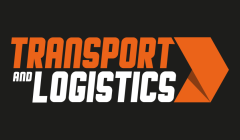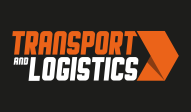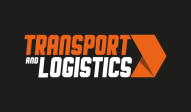
“Potential Implications Of The Crimea Stand-Off For The Russian And Ukrainian Automotive Industry”
Tim Urquhart, Svyatoslav Kuchko and Tatiana Hristova
IHS Automotive
The situation
Following the deposition of Ukranian president Viktor Yanukovych on February 22nd, and the formation of a temporary government by opposition forces, Russian armed forces have entered the autonomous Crimean region of the Ukraine and blockaded Ukrainian military installations. The deployment of Russian forces and Ukraine’s decision to mobilize its military, have heightened the risk of conflict in Crimea. With Russia undertaking large-scale military training exercises near its western border with Ukraine, the risk remains that any perceived provocation by the Kiev government could also lead it to intervene militarily in eastern Ukraine, escalating the crisis to a point of potential inter-state conflict. The crisis has been called ‘Europe’s biggest crisis of the 21st Century’ by the UK’s foreign minister William Hague.
OEM response
The situation of course has significant potential implications for companies operating in the Russian market’s automotive sphere. At the Geneva Motor Show, senior executives of OEMs gave some of their reactions to the ongoing crisis. Speaking to Bloomberg, Renault’s chief performance officer Jerome Stoll said, “In Russia we have a lot of economic and financial interests. Our localization rate is already very high; we are close to 80 percent to 85 percent, so we are not too worried by the devaluation. The main issue is the evolving political situation.” Renault is the global OEM which has made the biggest commitment to Russia. Its plan to take a 74.5% stake in Russia’s largest carmaker AvtoVAZ by mid-2014 is a central component of its global strategy and Renault and Nissan also have standalone manufacturing facilities. Ford is also heavily committed to the market. The company’s Executive Vice President and President of Europe, Middle East and Africa Stephen Odell said, “The latest situation is very volatile and we are closely monitoring it. We won’t do anything short term. It’s too early to jump to any conclusions.” General Motors (GM) also significant interests in Russia, including its own standalone manufacturing facility in St. Petersburg and a JV with AvtoVAZ at the latter’s Togliatti base. GM President Dan Amman said, “We’re watching the situation very closely on all fronts to be prepared to act. It’s a big market for us.”
Potential OEM and Supplier Implications
The latest iteration of the Decree 166 government policy, which is the regulatory framework for investing in the Russian automotive industry for foreign OEMs and Tier 1 and Tier 2 suppliers, has its core the desire to create the environment to encourage foreign direct investment (FDI) in the Russian automotive industry, and in the supplier base in particular. However, instead of encouraging investment through tax breaks or other incentives, the Russian government has looked to compel foreign OEMs to form partnerships with local assemblers with a commitment to manufacturing in excess of 300,000 units. These entry conditions are difficult for new OEMs to satisfy, with Fiat in particular long having struggled to come up with a cohesive plan to manufacture in Russia in a way that makes commercial sense. Given the current situation in Crimea, it is of course highly likely any pending negotiations over JV investment or investments in supplier plants will be put on hold. OEMs and suppliers are also likely to be increasingly wary in the future in terms of committing to fresh investment It is also true that with its planned takeover of AvtoVAZ, and associated shared production operations with the company, as well as standalone production operations in Russia, Renault/Nissan has the most to lose if the situation deteriorates. This is a critical time for the Renault-Nissan/AvtoVAZ relationship with Renault preparing to begin production of the Logan at the AvtoVAZ’s Togliatti plant, which also now manufacturers the Nissan Almera. Renault-Nissan is also planning full takeover and integration of AvtoVAZ into its own operations by mid-2014 with the company planning to complete a complex takeover process through the acquisition of a 74.5% stake in AvtoVAZ. The gestation of the deal has been extremely long, largely as a result of Russian government interference, real or threatened, with Renault first acquiring a 25% stake in AvtoVAZ as far back as March 2008. However, it is too early to give any definitive predictions of what the implications of the situation in Crimea will be for individual OEMs as the geo-political and military situation on the ground is developing rapidly and remains fluid.
Implications for the Russian Sales Forecast
For Russia, IHS Automotive analysts consider that all the current negative developments in Russian economy (Rouble depreciation, inflation, lack of investments and capital outflow) will accelerate by possible sanctions from western countries and organizations as a result of the dispute between Ukraine and Russia. For our base line we will slightly reduce our forecast from -3.8% market decline in 2014 (January Forecast) to -7% (March Forecast). In the base scenario we consider the implementation of intense diplomacy to resolve the Crimea conflict and some easing of the situation immediately after new presidential elections in May 2014. In our pessimistic scenario we consider prolonged armed conflict in the region and implementation of sanctions against Russia. In this case Russia will suffer not only from sanctions but also from deterioration of its image as a country to invest to. According to our pessimistic outlook, the LVS market will fall 10% this year and post a negative growth rate next year too. The market is expected to gain momentum in 2016.
Implications for Ukrainian Sales Forecast
For the Ukrainian sales forecast, we would expect a decline by 6.8% compared with the previous year, e.g. from 218,164 to 203,403 units in terms of registrations (statistics used in IHS Cornerstone). In terms of sales (official statistics used by the Ukrainian Automotive Association UkrAutoProm), the figures would be a bit different: 213,322 units in 2013 and 202,796 units in 2014.
The reasons why IHS Automotive analysts don’t expect a more serious decline in 2014 despite the political turmoil, are the following:
1. Surprisingly, in the first 2 months of 2014 sales were growing. According to the statistics of UkrAutoProm, in January-February 2014 passenger car sales went up by 5.8% y/y to 27,078 units. In February 15,204 passenger cars were sold, 11.9% more than a year before. Car production in February soared by 83% (!) y/y to 5,344 units.
2. Of course the increase in sales in January-February must have had to do with the depreciation of hryvna – Ukrainian national currency. The customers hurried up to buy a car before dealers could change the price lists. The increase in sales is however likely to be followed by a decline in March (due to the political situation) and by a even stronger y/y-decrease in April (in April 2013 the sales in Ukraine were unnaturally high, because the population rushed to buy cars before the introduction of additional customs duties, which were imposed in the end of the month). In March-April a drop by 25-30% y/y is quite probable. But in the middle of the year, as the political situation hopefully normalizes after presidential elections on May 25, we would expect a certain rebound.
3. After the elections on May 25, Ukraine’s partners in the West are likely to be more generous with the financial assistance to the country, and even some support from Russia is not to be ruled out (though it is hardly imaginable under the current conditions). Much will depend of course on who becomes president of Ukraine.
4. The new “provisional” government of Ukraine has stated that it would take up negotiations on the Association Agreement with the EU, which were put on hold by the previous Ukrainian leadership. One of the preconditions for signing this agreement was that Ukraine abolishes the additional customs duties on cars with the engine volume of 1.0 to 2.2 litre. This will have a negative effect on local production but will make imported cars more affordable (imports still make up around ¾ of all cars sold in Ukraine).
5. In November-December 2013 the Ukrainian car market was already affected by the riots in Kiev and was far below its previous year’s level. Therefore IHS Automotive expects that in November-December 2014 the market will be above the level of 2013.




